Body Heat (1981)
“You’re not too smart, are you? I like that in a man.”
|
Synopsis: |
|
Genres, Themes, Actors, and Directors:
Response to Peary’s Review: He adds that the “picture has a sharply written, almost campily humorous script; exciting, sexually explicit scenes; [and] strong performances by Hurt, Turner…, Crenna, Ted Danson (as Hurt’s DA friend), and Mickey Rourke (who teaches Hurt how to use explosives).” In Cult Movies 3, Peary expands upon his analysis, noting that the film developed an obsessive fan club, and sharing his thoughts on why the film does more than simply slavishly imitate older noir. He points out that while “Kasdan incorporates a fatalism that is prevalent in noir classics,” he “gives it a twist” since “both adulterers are not doomed the moment they seal their conspiracy with a kiss”; instead, Turner’s Matty “determines her own destiny.” On the other hand, Hurt’s Ned “pretty much fits the profile for noir ‘heroes'” given “he drinks and smokes constantly, is cynical and bored, thinks any woman would fall for him and that he is better than the man she is with now, tries to impress the femme fatale by devising and carrying out an intricate crime… and assumes Fate is too strong for him” — however, he “differs from most in that he’s not particularly sympathetic” and “doesn’t have any good qualities.” Meanwhile, “Kasdan also breaks convention with the third major character, Edmund Walker [Cranna]… In film noir, the husband whom the lovers try to kill typically is an absolute victim, unaware that there is a plot against him and too weak to put up a defense if he did know” — but “not so with Richard Crenna’s creepily played Walker,” who is “anything but an unaggressive patsy” and “has reached his position of wealth and power by stepping on weaklings and exhibiting a callous disrespect for the law.” However, “the biggest difference between Body Heat and the forties’ classics is in the presentation of sex.” Peary writes that “like Bob Rafelson’s Jack Nicholson-Jessica Lange remake of The Postman Always Rings Twice (1981), it brings the forefront the sex in James M. Cain’s novels that was only hinted at in the forties’ film adaptations.” He adds that “whereas forties’ femmes fatales used their sex appeal to lure unsuspecting men into their webs and to keep them willing prisoners, Matty uses the sex act to keep Ned in line.” Peary writes that while he doesn’t think Body Heat is “on the same level as the classics of the genre,” he finds it “a worthy, legitimate, most enjoyable entry to the genre,” and adds that he especially likes “the cinematography — the prowling camera, the interesting light patterns — of [DP] Richard Kline”: … “and how adeptly John Barry’s bluesy score complements the visuals and helps establish the proper sense of nightmare.” He notes that “best of all is Kathleen Turner,” who “proudly displays her long legs and daringly does nudity”; she “is extremely sexy, not just because of the way she looks… and her uninhibited nature in bed, but equally because of her energy and eagerness…, her confidence, her strength, her ambition, her perseverance, and her intelligence” — to the point that “Ned comes to realize, it was kind of an honor to be duped by such a woman.” Note: The use of wind chimes in this film is particularly effective. Notable Performances, Qualities, and Moments:
Must See? Categories
(Listed in 1001 Movies You Must See Before You Die) Links: |
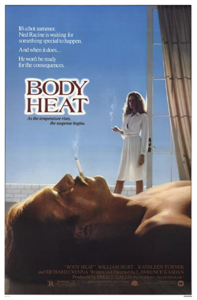
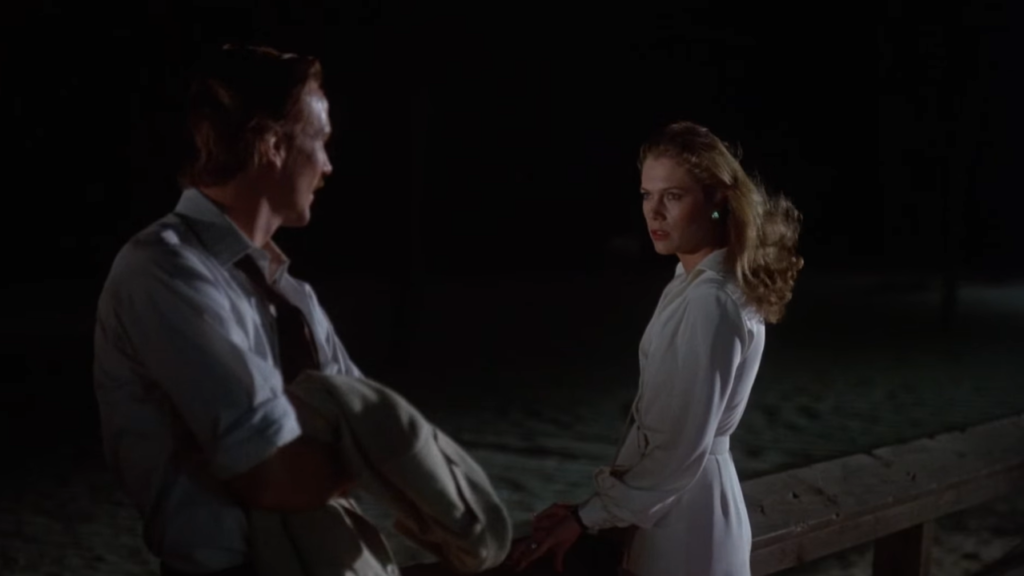
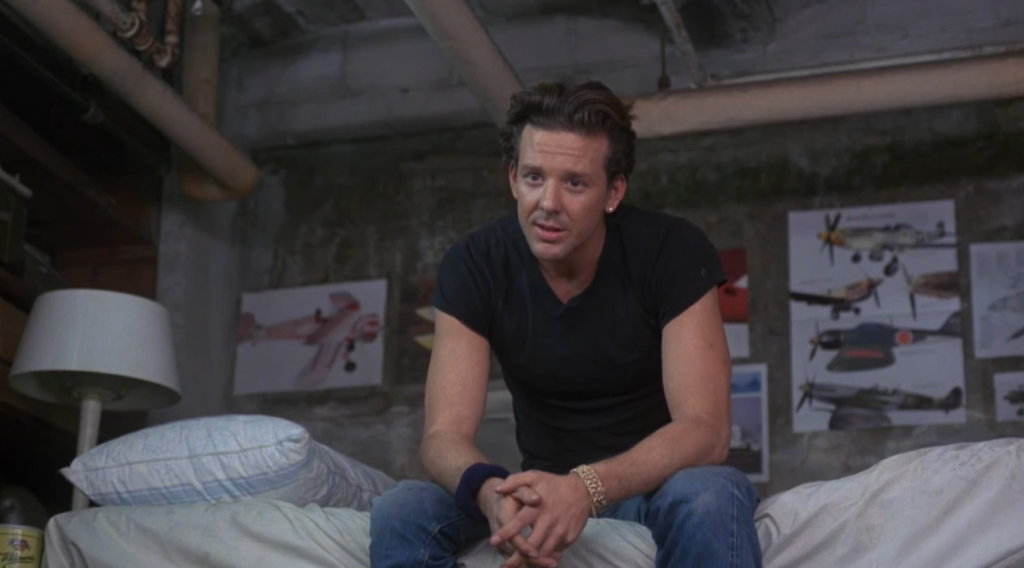
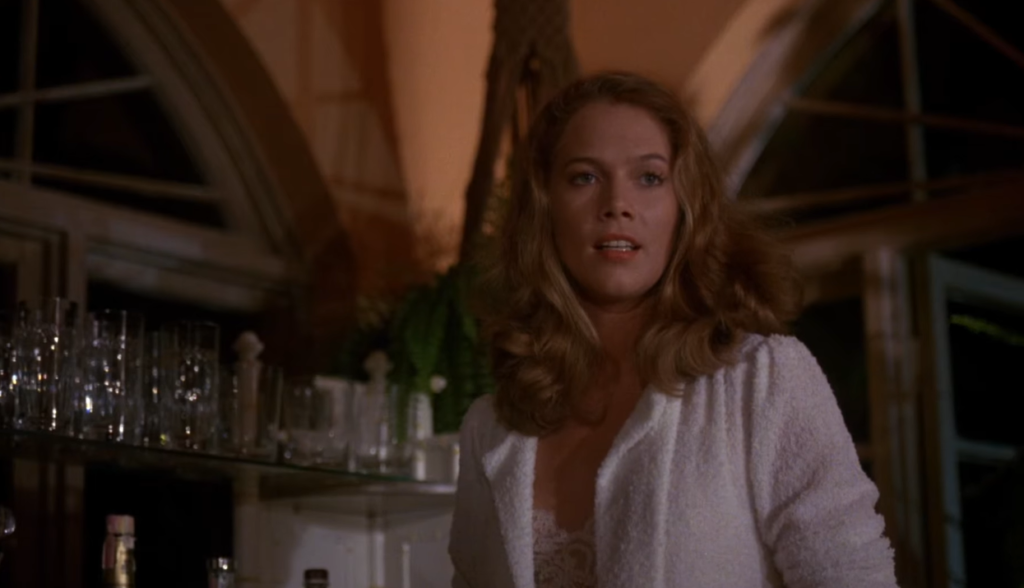

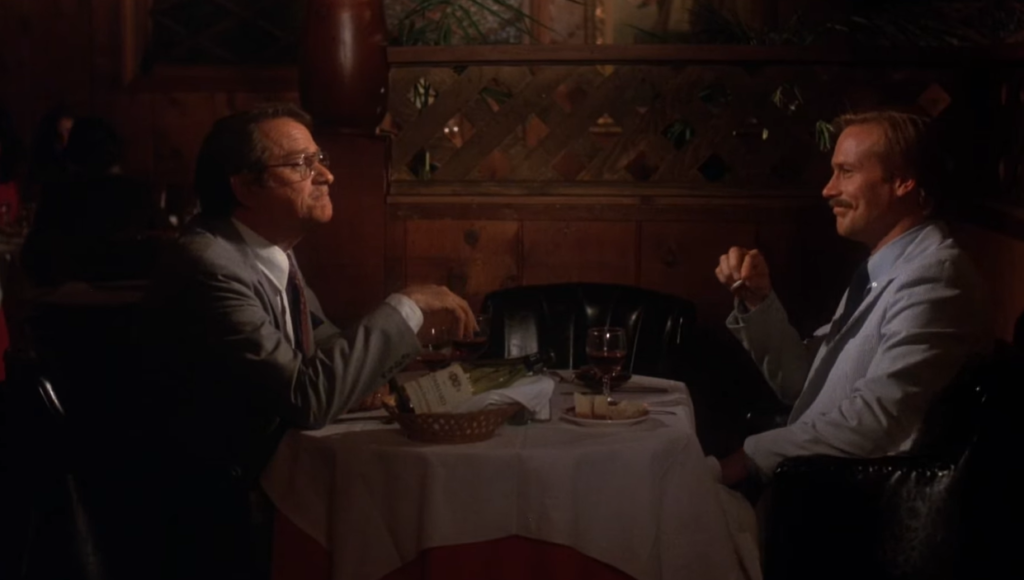
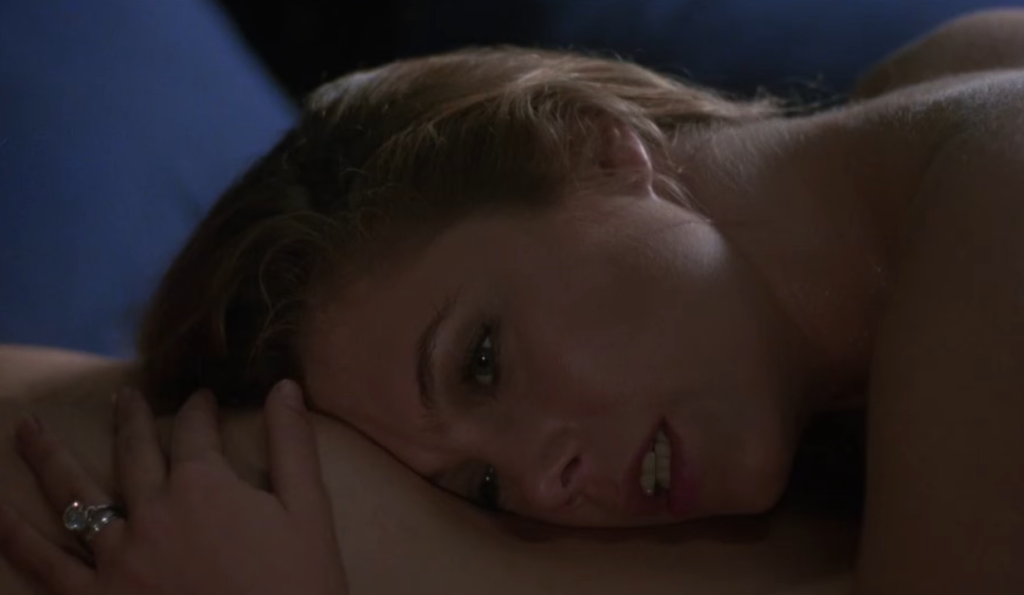
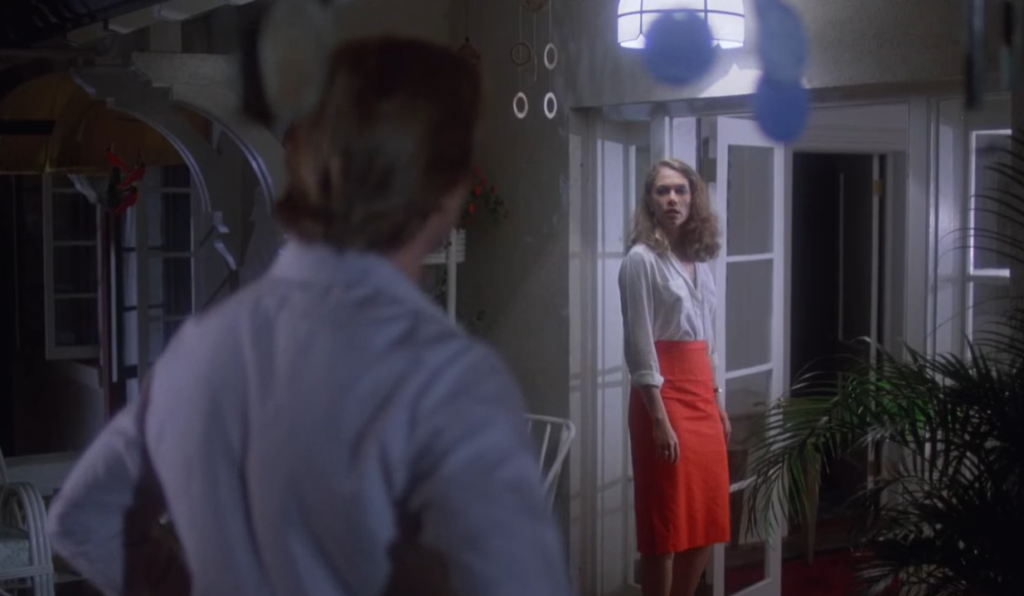

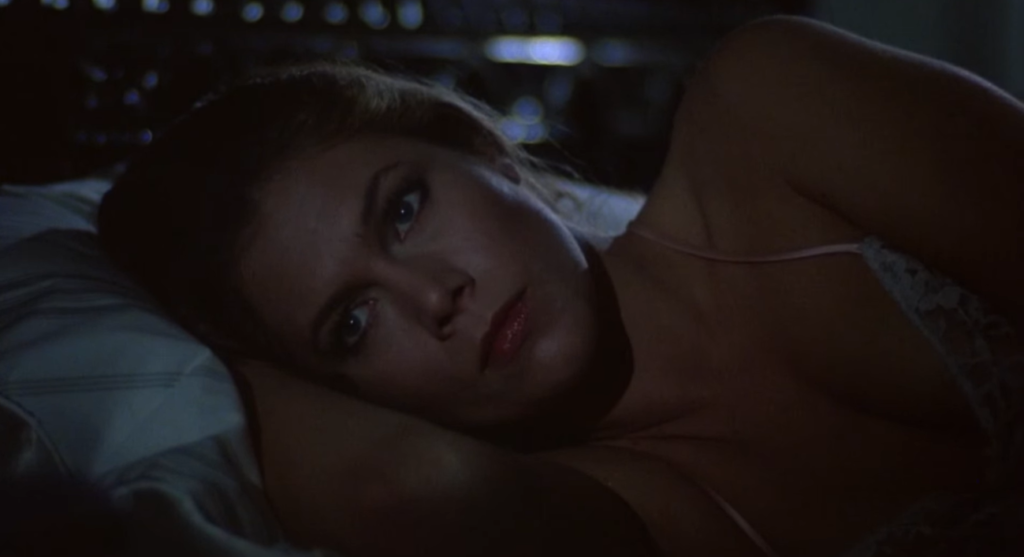
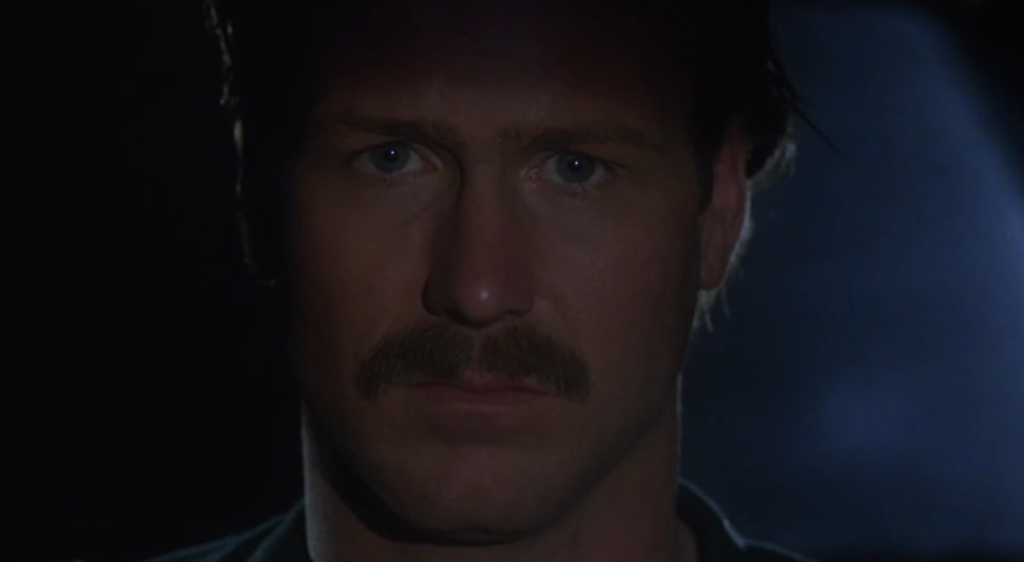
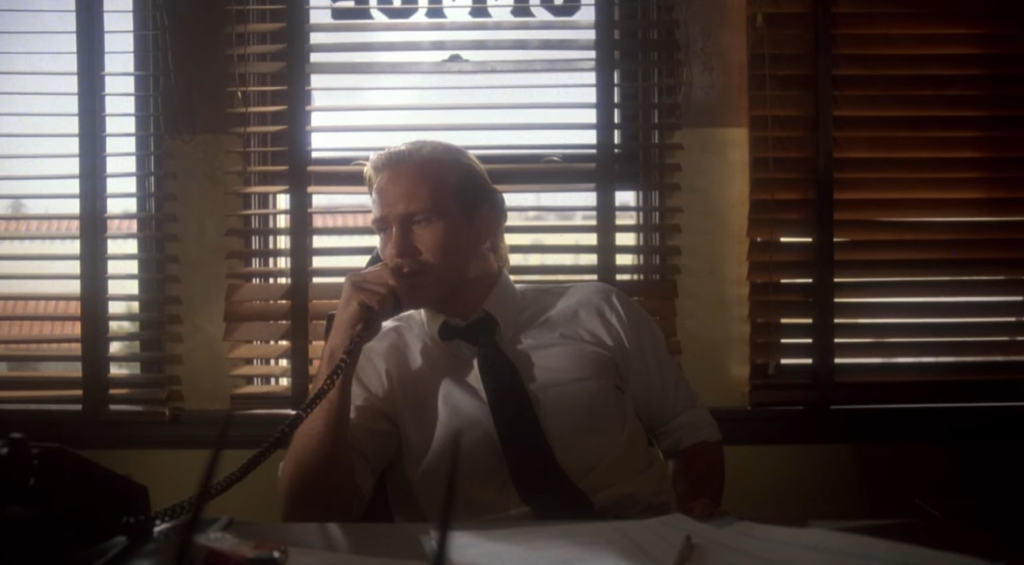
One thought on “Body Heat (1981)”
A once-must, as a successful homage to the genre.
I wouldn’t call it a personal fave but it’s a significant ’80s film – and, to me, it remains writer / director Lawrence Kasdan’s most effective piece.
Side note: In an interview, Turner revealed that, when she auditioned for the role, she was (along with some theater / tv-related work) waitressing in NYC – and that once ‘BH’ was finished filming, she returned to the waitress job she had given up… until the release of ‘BH’ changed her professional career overnight.